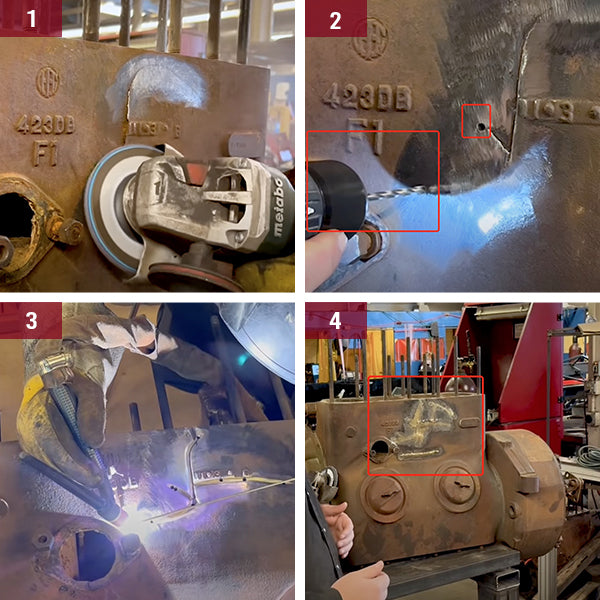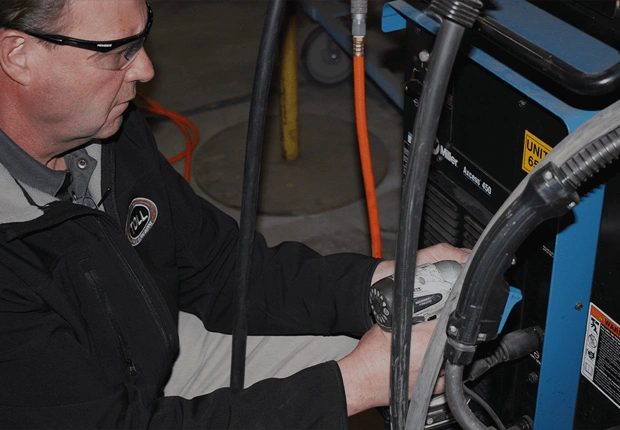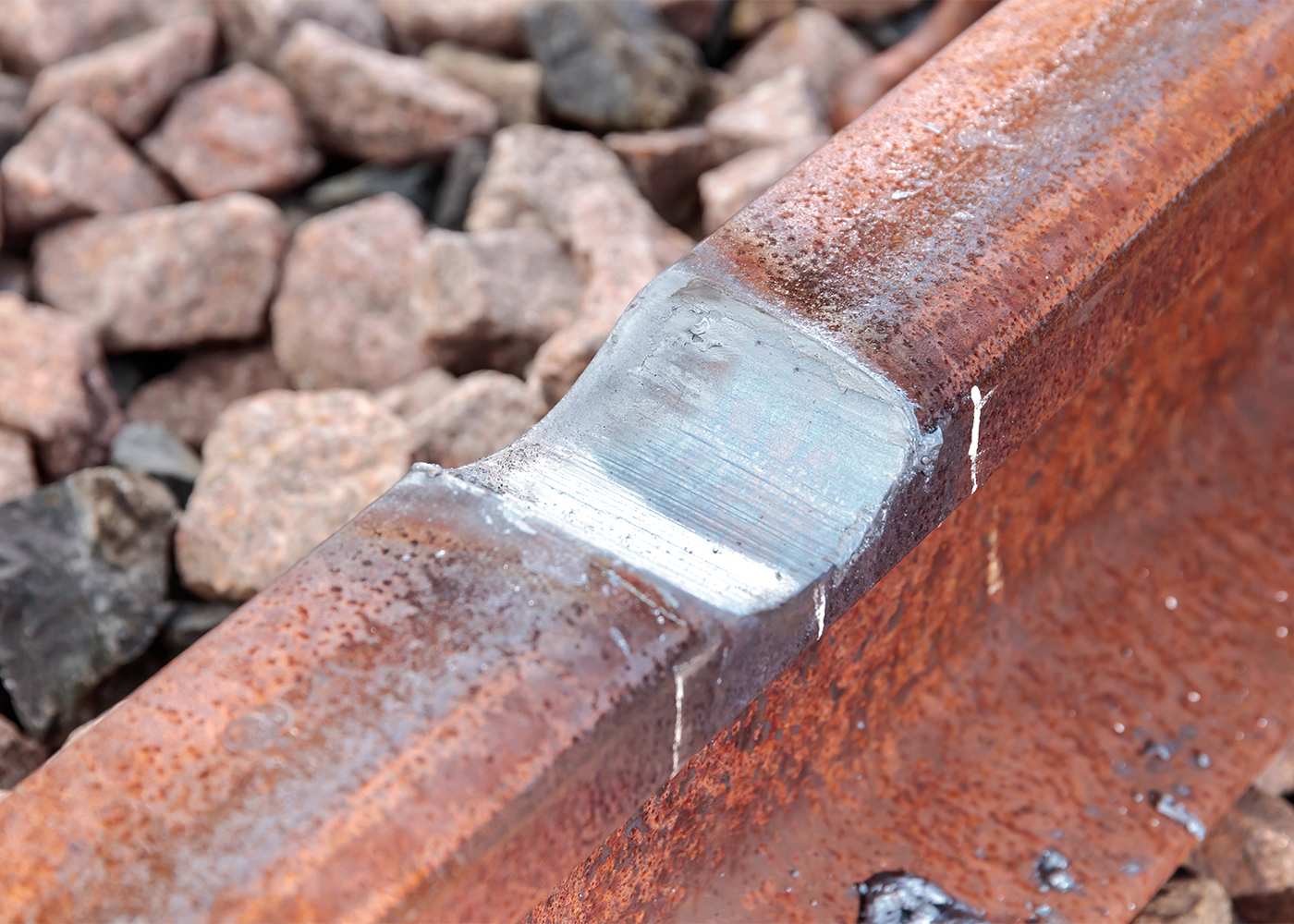Common Welding Repair Work Issues and Exactly How to Address Them Properly
Welding repair services typically run into a variety of concerns that can endanger the honesty of the end product. Usual troubles consist of inadequate penetration, porosity, and imbalance, to name a few. Each problem presents distinct difficulties that call for details techniques for resolution. Comprehending these problems is vital for welders aiming to boost their abilities and end results. This conversation will certainly discover these typical welding repair service problems and effective approaches to resolve them.
Insufficient Penetration
Poor infiltration happens when the weld steel falls short to fully fuse with the base product, leading to weak joints and prospective architectural failings. This problem usually comes from insufficient warmth input, inaccurate electrode angle, or improper welding rate. Welders may come across insufficient penetration due to a miscalculation of the needed criteria for a particular material thickness or type. Additionally, contamination on the base material's surface area can prevent reliable bonding, intensifying the problem. To attend to inadequate infiltration, welders ought to assure appropriate setups on their devices and keep a clean work surface area. Regular examination of welds is suggested to recognize any shortages early, allowing for prompt corrections and the prevention of jeopardized architectural honesty in welded settings up.
Porosity
Porosity is a typical defect in welded joints that materializes as small gas bubbles entraped within the weld steel. This issue can endanger the honesty of the weld, bring about reduced stamina and possible failure under anxiety. Fabrication. Porosity usually arises from contamination, moisture, or incorrect welding techniques, which enable gases to run away right into the liquified weld pool. To deal with porosity, welders ought to ensure appropriate surface prep work, keep a tidy functioning atmosphere, and make use of ideal welding specifications. Furthermore, selecting the ideal filler product and securing gas can mitigate gas entrapment. Regular assessment and testing of welds can assist recognize porosity early, guaranteeing prompt restorative actions are taken, thus protecting the quality and dependability of the welded framework
Imbalance
Imbalance in welding can develop from numerous variables, consisting of inappropriate arrangement and thermal growth. Comprehending the source is vital for efficient resolution. Several adjustment methods are available to realign parts and guarantee structural integrity.
Reasons for Imbalance
Welding misalignment frequently stems from a selection of underlying concerns that can endanger structural honesty. One key cause is improper fit-up of parts prior to welding, which can result in voids and unequal surfaces. Variants in thermal growth during the welding procedure can also cause distortion, specifically if the products being joined have various coefficients of development. Furthermore, inadequate fixturing and clamping might stop working to hold parts firmly in place, leading to activity during welding. Improperly maintained tools, including welding equipments and tools, might introduce inconsistencies in the weld grain, more adding to misalignment. Driver mistake, stemming from insufficient training or experience, can likewise play a substantial function in developing misaligned welds.

Correction Techniques Offered
Resolving imbalance effectively requires a combination of corrective techniques customized to the specific concerns handy. One common method is using jigs or components to hold components in the appropriate setting during welding, making certain regular positioning. Furthermore, preheating the materials can help in reducing distortion and enhance fit-up. For substantial imbalance, mechanical realignment strategies, such as making use of hydraulic jacks or clamps, can be utilized to remedy the placement prior to welding. Post-weld heat therapy may also be necessary to alleviate tensions brought on by imbalance. Finally, careful evaluation and modification during the configuration phase can prevent imbalance problems from coming to be considerable issues, promoting a smoother welding process and enhancing total architectural integrity.
Distortion
Distortion is a common obstacle in welding that can develop from different elements, consisting of unequal cooling and heating. Understanding the reasons for distortion is crucial for carrying out effective prevention strategies. Addressing this concern not only boosts architectural integrity but likewise improves the general top quality of the weld.
Reasons for Distortion
When based on the extreme heat of welding, materials frequently undertake modifications that can lead to distortion. This sensation largely occurs from thermal growth and tightening throughout the welding procedure. As the weld area warms up, the material expands; upon cooling, it contracts, which can create inner tensions. Additionally, unequal heating throughout a work surface can exacerbate these stress and anxieties, resulting in bending or bending. The sort of product likewise plays a considerable role; steels with differing thermal conductivity and coefficients of growth might react differently, resulting in unpredictable distortions. Inadequate joint layout and poor fixturing can contribute to misalignment throughout welding, raising the chance of distortion. Recognizing these reasons is vital for efficient welding fixing and prevention techniques.
Avoidance Techniques
Efficient avoidance strategies for distortion during welding concentrate on regulating heat input and ensuring appropriate joint layout. Preserving a consistent warmth input helps to decrease thermal development and contraction, which can lead to distortion. Using techniques such as pre-heating the workpiece can additionally reduce the temperature gradient, promoting uniform heating. Furthermore, choosing suitable joint layouts, such as T-joints or lap joints, can enhance stability and minimize stress focus. Executing correct fixturing to secure the work surfaces in position better aids in keeping alignment throughout the welding procedure. Staggered welding series can distribute warm extra evenly, stopping local distortion. By applying these methods, welders can significantly reduce the likelihood of distortion and boost the overall high quality of their welds.
Cracking
Cracking is a typical problem encountered in welding repair services, commonly resulting from numerous variables such as incorrect air conditioning prices, product option, or inadequate joint prep work. The occurrence of fractures can greatly endanger the stability of the weld, causing potential failings during procedure. To resolve this problem, welders must initially brazing welding analyze the source, making sure that materials work and suitably picked for the certain application. Furthermore, managing the air conditioning rate throughout the welding procedure is essential; rapid air conditioning can cause tension and bring about splitting. Proper joint design and prep work additionally add to find here lessening the danger. Implementing these techniques can improve weld high quality and longevity, ultimately minimizing the probability of breaking in ended up weldments.

Incomplete Blend
A substantial problem in welding repairs is insufficient combination, which happens when the weld steel does not properly bond with the base product or previous weld passes - Welding. This problem can cause weaknesses in the joint, potentially jeopardizing the honesty of the bonded structure. Aspects contributing to insufficient fusion include not enough warmth input, inappropriate welding technique, and contamination of the surfaces being joined. To resolve this concern effectively, welders ought to assure proper pre-weld cleaning and surface prep work, along with readjust their welding parameters to accomplish ample penetration and fusion. Regular assessment throughout the welding procedure can additionally aid identify incomplete blend early, enabling prompt corrective steps to boost the total top quality of the weld
Overheating
While welding repair work can enhance structural stability, overheating provides a substantial obstacle that can lead to material deterioration. Too much warmth during welding can modify the mechanical properties of steels, causing minimized toughness, boosted brittleness, and warping. This phenomenon is especially vital in high-stress applications where structural dependability is vital. Recognizing getting too hot can involve aesthetic examinations for discoloration or distortion, along with keeping track of temperature level during the welding procedure. To alleviate the risks related to overheating, welders ought to employ appropriate strategies, such as managing heat input, readjusting travel speed, and making use of ideal filler materials. Additionally, executing pre- and post-weld heat therapies can assist restore material buildings and boost the total top quality of the fixing, guaranteeing long-term efficiency and safety and security.
Regularly Asked Concerns
What Are the Typical Indications of a Welding Flaw?

Exactly How Can I Check My Welds for Top quality?
To examine welds for top quality, one can make use of visual assessments, ultrasonic screening, and radiographic techniques. Each method ensures architectural stability, determines issues, and validates adherence to specified standards, ultimately improving the reliability of the bonded joints.
What Security Precautions Should I Take While Welding?
When welding, one need to focus on safety and security by putting on proper individual safety equipment, making sure correct ventilation, safeguarding flammable products away, preserving a clean workspace, and understanding environments to avoid accidents and injuries.
Can I Repair a Weld Without Remodeling the Entire Joint?
Fixing a weld without remodeling the whole joint is feasible, relying on the damage (Montana Mobile Welding and Repair Belgrade Fabrication). Techniques such as grinding, including filler product, or using a welding process can properly attend to certain problems while protecting the bordering framework
What Equipment Are Crucial for Efficient Welding Repairs?
Necessary devices for efficient welding repairs consist of a welding maker, wire brush, mill, safety equipment, clamps, and filler materials. Each device plays an important function in making sure quality and safety and security during the repair service procedure. Porosity usually emerges from contamination, moisture, or incorrect welding methods, which enable gases to escape into the molten weld swimming pool. Badly conserved devices, consisting of welding makers and devices, might present inconsistencies in the weld grain, additional adding to imbalance. When subjected to the extreme warmth of welding, materials typically undertake adjustments that can lead to distortion. Fracturing is an usual problem run into in welding repair work, usually resulting from different aspects such as improper cooling prices, material choice, or poor joint prep work. A considerable problem in welding repair services is incomplete blend, which occurs when the weld steel does not appropriately bond with the base material or previous weld passes.